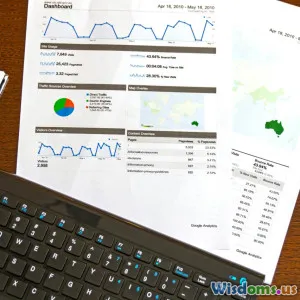
The Role of Analytics in Content Strategy
6 min read Discover how analytics can enhance your content strategy and drive effective content creation and engagement. (0 Reviews)
The Role of Analytics in Content Strategy
In the ever-evolving landscape of digital content, understanding your audience and measuring performance is crucial. Analytics has emerged as a game-changer in shaping content strategies that not only resonate with audiences but also drive conversions and establish brand loyalty. This article delves into the integral role of analytics in content strategy, outlining how it can enhance your content creation process and improve overall effectiveness.
Understanding Analytics in Content Strategy
Analytics refers to the systematic computational analysis of data. In the context of content strategy, it involves collecting, measuring, and analyzing data related to user interactions with content. This can include metrics such as page views, time on page, bounce rates, social shares, and conversion rates. By leveraging analytics, businesses can gain deep insights into audience behavior, preferences, and engagement levels.
Why Analytics Matter in Content Creation
-
Audience Insights: Analytics help you understand who your audience is. By analyzing demographics, interests, and behavior patterns, content creators can tailor their content to meet the specific needs and preferences of their audience. For instance, if analytics show that a particular demographic engages more with video content, you might consider increasing your video production efforts.
-
Content Performance Tracking: With analytics, you can track the performance of your content in real-time. This includes understanding which pieces of content drive the most traffic, generate leads, or increase engagement. For example, if a blog post about a specific topic receives significantly more views than others, it may indicate a demand for more content in that area.
-
Optimizing Content Strategy: By regularly reviewing analytics, you can identify which types of content are performing well and which are not. This data allows you to optimize your content strategy by focusing on successful formats and topics, while also eliminating or revamping underperforming content.
-
Enhancing SEO: Analytics can provide critical insights into how users find your content. By understanding the keywords that lead to the most traffic, you can refine your SEO strategy, ensuring that your content ranks higher in search engine results and reaches a broader audience.
-
Measuring ROI: For businesses, it’s essential to measure the return on investment (ROI) for content marketing efforts. Analytics allows for tracking conversions and sales, helping to determine the effectiveness of content in driving business results. This data is invaluable for justifying marketing budgets and planning future strategies.
Key Metrics to Consider
When harnessing analytics for your content strategy, it’s essential to focus on the right metrics. Here are some key performance indicators (KPIs) to consider:
- Traffic Sources: Understand where your traffic is coming from (e.g., organic search, social media, direct visits) and adjust your strategy accordingly.
- Engagement Metrics: Look at metrics like average time spent on page, pages per session, and social shares to gauge audience engagement.
- Conversion Rates: Measure how effectively your content drives desired actions, such as sign-ups, downloads, or purchases.
- Bounce Rate: A high bounce rate may indicate content isn’t meeting user expectations, suggesting a need for improvement.
Tools for Analyzing Content Performance
Several analytics tools can help you track and analyze your content’s performance effectively:
- Google Analytics: The most widely used platform for tracking website traffic and user behavior. It provides detailed insights into how users interact with your content.
- SEMrush: A comprehensive marketing tool that offers SEO, PPC, content, and social media analytics to optimize your content strategy.
- BuzzSumo: Excellent for analyzing content performance across social media platforms, helping to identify trending topics and influencers.
- HubSpot: A robust marketing platform that integrates analytics with other marketing tools, allowing for a holistic view of content performance.
Conclusion
In a digital landscape overflowing with content, leveraging analytics is no longer optional but essential for crafting effective content strategies. By understanding audience behavior, measuring performance, and optimizing based on data-driven insights, you can create content that not only engages but also converts. Embrace analytics as a pivotal component of your content strategy to stay ahead in today’s competitive environment and deliver value to your audience.
By integrating analytics into your content creation process, you can make informed decisions that enhance your content’s effectiveness and drive business growth.
Rate the Post
User Reviews
Popular Posts





















